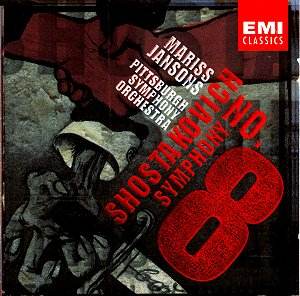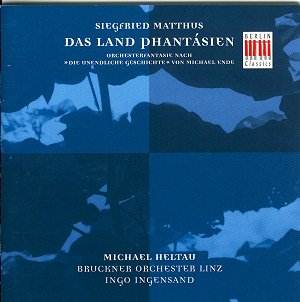 Composer: Dmitri Shostakovich
Composer: Dmitri Shostakovich
Works: Symphony No. 8 (1943)
Performers: Pittsburgh Symphony Orchestra, Mariss Jansons (conductor)
Recording: Live recording at Heinz Hall, Pittsburgh, 9/11-2-01 – DDD
Label: EMI Classics CDC 5 71762-2
Dmitri Shostakovich’s Symphony No. 8, composed in 1943 during a period marked by the harrowing realities of World War II, reflects the deep emotional turmoil and existential dread of its time. This symphonic work, often overshadowed by the more popular Fifth and Seventh Symphonies, embodies a stark and harrowing landscape, capturing a sense of despair and resignation that resonates with the historical context of its creation. The Pittsburgh Symphony Orchestra’s live recording under Mariss Jansons provides a poignant interpretation of this complex score, inviting listeners to traverse the somber corridors of Shostakovich’s musical ethos.
Jansons’ interpretation is marked by a meticulous attention to detail, revealing the intricate textures and contrasting moods inherent in the work. The searing string cantilenas of the first movement emerge with a raw emotionality that is both haunting and evocative. The orchestra is tightly unified under Jansons’ direction, each section contributing to the overall tapestry of sound with precision. In the motoric second and third movements, the driving rhythms are executed with exhilarating vigor, showcasing the orchestra’s technical prowess. The tension builds expertly, culminating in passages that are both exhilarating and unsettling—an apt reflection of Shostakovich’s intent to portray the chaos of wartime.
The engineering quality of this recording deserves particular praise. The acoustics of Heinz Hall enhance the immediacy of the performance, allowing the listener to feel enveloped by the orchestral sound. The balance between sections is well-managed, ensuring that the darker, tragic elements of the music resonate deeply without overshadowing the more frenetic and chaotic passages. Jansons’ approach to the tragic sections, in particular, reveals a sensitivity that elevates the emotional weight of the work. This contrasts with earlier interpretations, such as those by Kondrashin, where the rapid passages exhibit a certain demonic energy that is somewhat subdued in this performance. Yet, the Pittsburgh rendition compensates for this with a profound depth of feeling that draws the listener into the symphony’s introspective depths.
One engaging aspect of this recording is the bonus rehearsal segment included, where Jansons discusses the symphony’s background and its relevance in the modern era. This glimpse into the rehearsal process reveals the conductor’s thoughtful engagement with the work, though one might sense a slight hesitancy—perhaps a caution stemming from the live recording that occasionally tempers the raw spontaneity one might expect. Nevertheless, this insight enriches the listening experience and underscores the importance of understanding the historical and emotional contexts in which this symphony was composed.
The Pittsburgh Symphony’s performance of Shostakovich’s Eighth is a compelling addition to the existing catalog of recordings. While it may not possess the frenetic demonism found in some Russian performances, it compensates with a nuanced portrayal of the work’s inherent tragedy, subtlety, and depth. Jansons’ collaboration with this orchestra proves fruitful, resulting in a recording that stands alongside other notable interpretations. As part of his ongoing exploration of Shostakovich’s symphonic oeuvre, this release invites further appreciation and underscores the conductor’s capabilities in illuminating the darker corners of the Russian master’s music. A commendable recording that is both technically superb and emotionally resonant, this performance merits the attention of both Shostakovich aficionados and newcomers alike.



